A brief illustrated description of the collection of Tibetan manuscripts and block prints This chapter will be revised as the collection is processed. I First there are the editions of the Tibetan Buddhist Canon, consisting of two large collections of texts mostly translated from Sanskrit into Tibetan. They are called Bka' 'gyur (the Buddha’s words) and Bstan 'gyur (later treatises considered as commentaries on the Buddha’s words). The formation of the canon took many centuries and was not centralized, with the result that the editions made in various places throughout Tibet are not quite identical in respect of their structure and contents. The IOM RAS has several editions of the canon. The Peking edition, whose printing is of the highest quality, was presented to Nicolas II by the Chinese Emperor and later passed to the Asiatic Museum. Each volume is placed between wooden plates upholstered with beautiful cloth and is decorated with refined pictures of various Buddhas and deities. 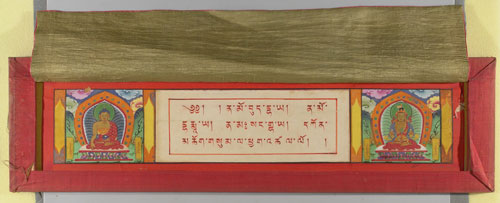
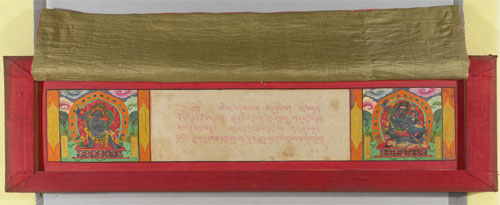
Thick Chinese paper is used, printing quality is very clear, ink is red. Fragments of one of the volumes are used for design of this web-page. The entire set of the Peking edition consists of Bka’ ’gyur , Bstan ’gyur and sumbums of two famous Tibetan authors such as Rje tsong kha pa and Lcang skya rol pa’i rdo rje. In our collection the latter part is not represented. We have several copies of Narthang edition of the canon which is close to the Peking edition by both structure and contents. The Bka’ ’gyur is represented in ten copies, though only two of them are complete, all others being more or less incomplete. One copy is of a special interest since each volume is placed between wooden plates upholstered with cloth decorated with beautiful ornamentation patterns including dragon figures. From the inside the plates are also of an exquisite design: 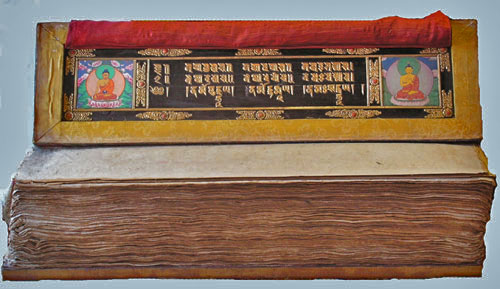
In comparison with the Peking edition the Narthang one is of much lower printing quality. Paper was produced in Tibet, it is rather rough. The same can be said about the Narthang Bstan ’gyur , it is represented with four copies two of which are complete: 
The Derge edition of Bka’ ’gyur is an important part of our collection. It was purchased by the Asiatic Museum within the collection of Baron P. Schilling (in the catalogue of Schmidt and Böhtlingk it is mistakenly called the Narthang edition). This edition has rather clear printing, thick textured Tibetan paper is used, ink is red. A piece of yellow silk is glued to the first folio of each volume as a kind of khatak scarf: 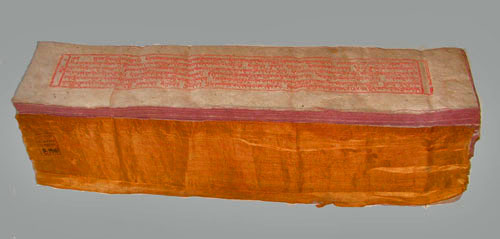
Moreover, we have two other editions of Bka’ ’gyur such as those published in Cone and Urga. Both editions are of good printing quality, paper is solid and smooth. The format of volumes of the Cone edition is rather wide: 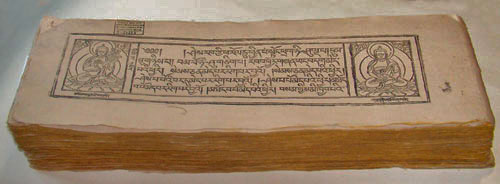
From the textological point of view both editions are somehow secondary since they follow the Derge edition which is quite different from the Peking and Narthang editions. To this part of the collection some catalogues and indices of treatises included into the canon adjoin. Most of them were produced in Buryatia on order of Baron P. Schilling. Some of them are well-compiled volumes such as the following catalogue of the Cone Bka’ ’gyur : the text written on the verso sides only contains both Sanskrit and Tibetan titles of the treatises, the names of translators and revisers, the names of the chapters of the canon and volumes, and the numbers of pages covered by each text. 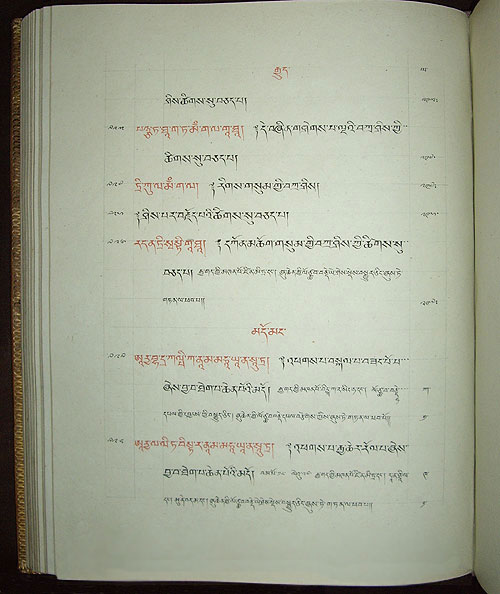
Some indices of the treatises from the collection of P. Schilling are nothing but sets of files with the titles grouped according to the Tibetan alphabet. II Editions of separate canonical texts compose a considerable part of the entire collection. Of special interest are manuscript books skillfully produced by the Buryat masters (most of them were a part of the collection of Baron P. Schilling). Books with paper painted blue and text written with golden ink or inks of several colors are united into one set of items. 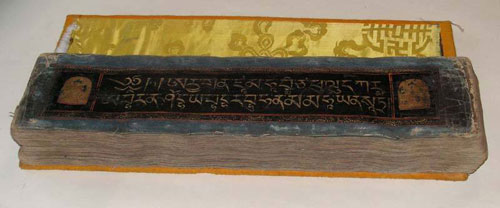
Prajñāpāramitā sutras consisting of 100 thousand, 25 thousand, 8 thousand and one thousand verses were printed especially often among the separate texts. At the IOM’s collection there are many copies of various Peking editions of the sutras thus possessing more than seven big book cases. 
Prajñāpāramitā in One Thousand Verses is represented also with Buryat and Mongolian editions (the latter one is on the picture below)
Other long sutras are also represented with separate editions. Especially numerous are editions of The Sutra of Golden Light produced in both China and Buryatia in many copies. 
Some shorter sutras of the Tibetan Buddhist canon were also popular and often printed. Thus, the famous Vajraccheddika is represented in a great number of block prints 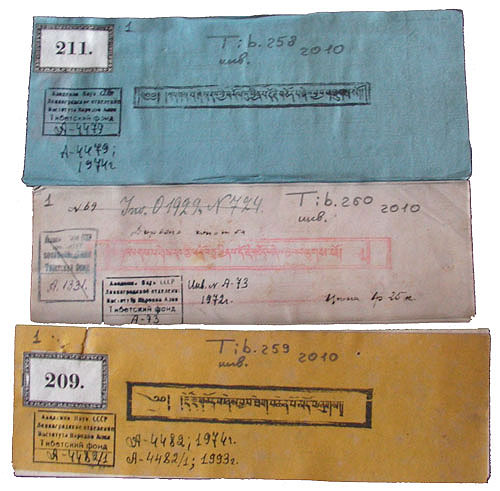 and manuscripts. 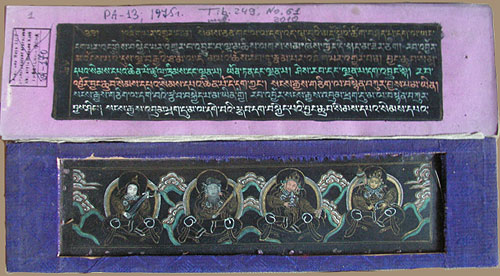
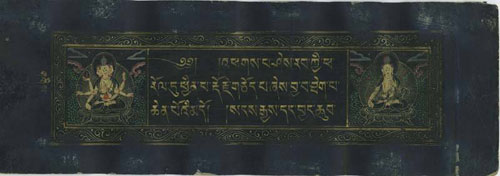
To be continued... |

